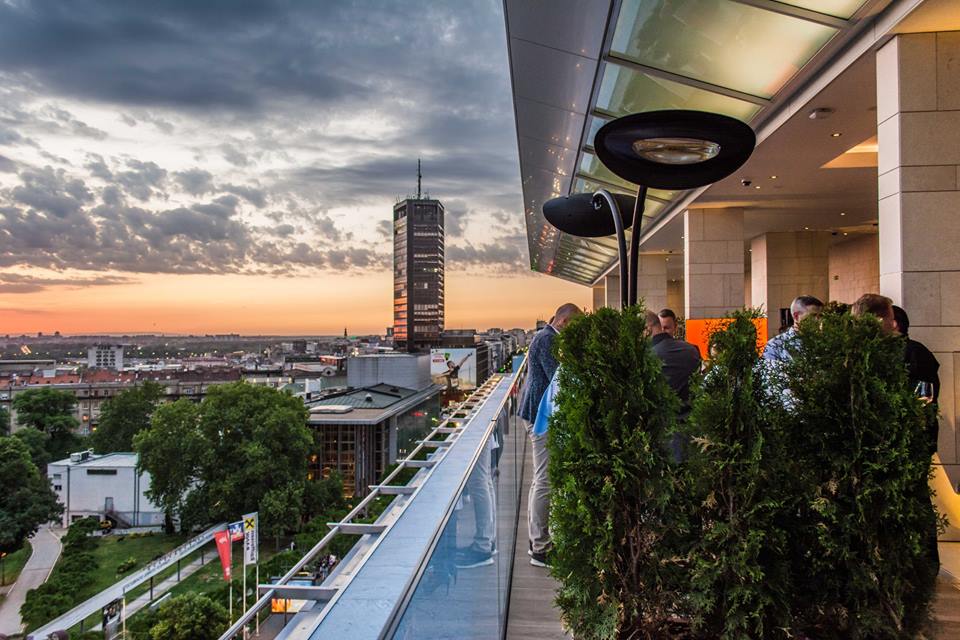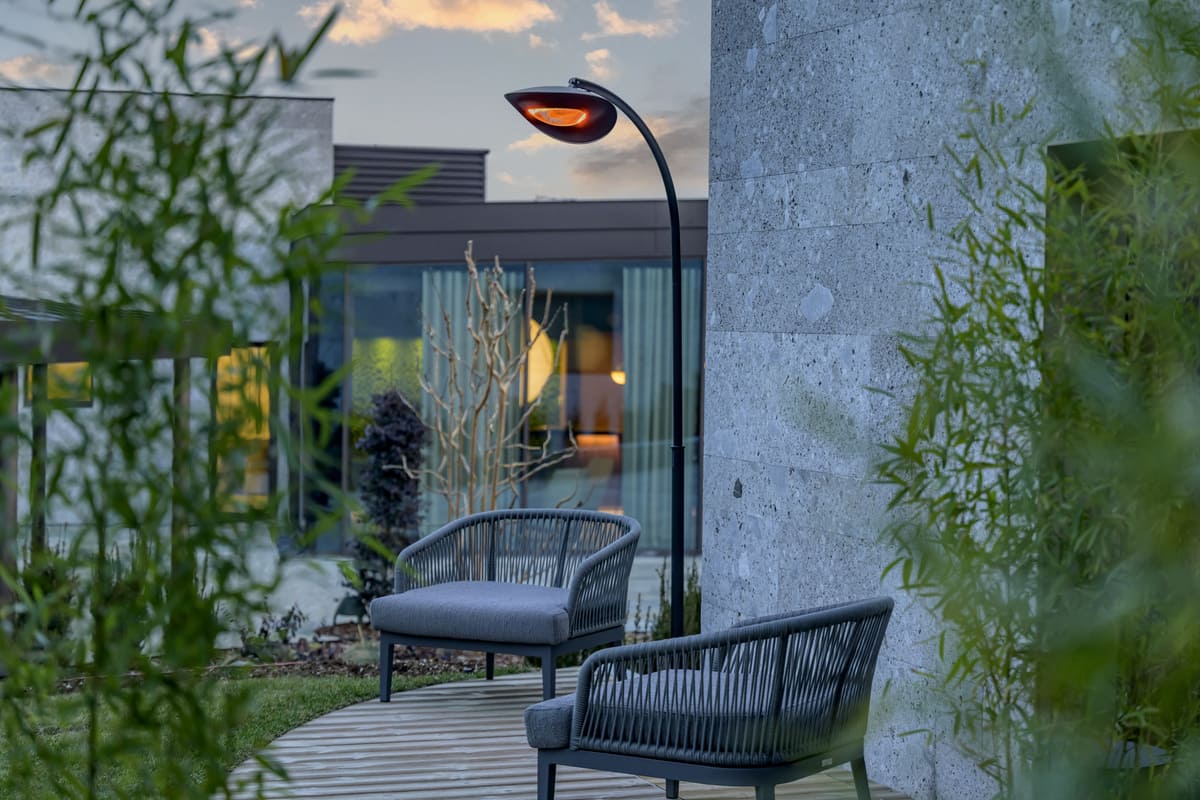Enjoying moments outdoors on the terrace doesn't have to be limited by cooler temperatures, especially…

Energy efficiency of infrared lamps
Energy efficiency of infrared lamps
More and more often infrared lamps are used on terraces or in outdoor areas giving thermal comfort and prolonging their use and efficiency even on the coldest and harshest winter evenings.
- How radiation works
- Types of infrared lamps
- Efficiency of infrared lamps
- Uses and purposes
How radiation from infrared lamps works
Rooms or objects can be heated by contact or without contact. If the heating takes place through contact, the warmer source transmits heat to the coldest source, which will heat up to reach thermal equilibrium. Contact heating is known as conduction if there is a source of heat, or convection if there is contact with a heated medium, such as air. Non-contact heating, on the other hand, is used by infrared (IR) lamps and is carried out by irradiation and radiation with IR ray wavelengths. The object irradiated by the heat source, in this case the infrared lamp, absorbs at least 92% of the energy supplied by the source.
This process can be optimized in terms of efficiency if the object to be heated has an absorption coefficient that is comparable to the action spectrum of the lamp used. The types of infrared rays can be short wave (IR – A), medium wave (IR – A) or long wave (IR – A). Although the lamps are named according to the type of wave they emit, long, medium or short, in reality the transmitted waves are never of one single type, but vary in length due to interference with other waves of the same type.
Types of infrared lamps
Infrared lamps, also called IR radiators, are devices intended for use in open or closed spaces that transform the energy supplied through electricity or gas into heat. They can be of different types:
Medium wave metallic infrared lamps: these are lamps that have a radiating element entirely in metal, widely used in various industries, especially in those environments where working conditions are adverse, with high humidity, impacts, and are easily installed.
Medium wave quartz infrared: these have a quartz tube and have the characteristic of reaching operating temperature very quickly and cooling down just as quickly.
Short wave quartz infrared: these infrared lamps are perfect for a concentration of heat in small spaces. They are also perfect lamps for working in an environment that operates at controlled temperatures, as the quantity of heat from shortwave quartz infrared lamps is regulated by energy percentage calculation.
Efficiency of infrared lamps
Infrared lamps, compared to halogen lamps or other types of space heating, are decidedly more attractive from a design point of view and are also much more energy efficient.
Indeed, from an energy point of view, infrared lamps have a very short reaction time. In 1-3 seconds, the lamp turns on and reaches the desired temperature. The same applies to switching off or controlling the temperature. This is possible because the heat diffusion is not managed by conduction or convection, which require contact, but by radiation, which in this case has a wavelength of 0.78 µm and 10.0 µm, depending on the type of IR.
IR lamps with an average wavelength can transform at least 92% of the electricity absorbed into heat radiation. They are therefore much more efficient than simple halogen lamps.
At the nominal voltage indicated by the production factory, an IR lamp has an average lifespan of around 5000 hours.
Infrared lamps, depending on the type, have a variable power density. That can reach up to 270 W per cm and a specific heating area up to 500 kW / m2.
The quality of the materials used is extremely important for guaranteeing the efficiency of infrared lamps. Specifically, the use of metallic or quartz materials will vary the efficiency of the final product, as well as its end use. High quality quartz tubes guarantee excellent performance from a mechanical point of view. Such as robustness and good diffusion of thermal energy.
The temperatures provided by infrared lamp systems range from 800 K to 3200 K. The type of radiation and its mode of diffusion can be customized based on its use or the application of additional coatings.
Uses and purposes
Infrared lamps are used for the main purpose of heating, given their efficiency and versatility in various service environments. They can meet any need, from industrial use, to use in restaurants or on private terraces.
The main and most widespread purposes of use are outside commercial premises, to maintain an optimal level of thermal comfort for customers, even on the harshest winter evenings. They can even be installed in private gardens and terraces to create the right atmosphere even in the less warm and summery seasons.
Very often these lamps are used in industrial warehouses. Where contact heating is inefficient, slow and can even be more expensive. Very often it is even used in catering to keep dishes hot before table service, or for completely different uses. Such as construction and industrial applications. Indeed, infrared lamps are often used to heat thin layers of semiconductors, to weld plastic materials, to harden resins, to fix printer toners, to harden cement and are so versatile that they can even be used to shrink sheeting, evaporate chemical solvents, and to release residual stresses created by mechanical processes such as metal welding.
As just mentioned, the applications and uses of infrared lamps are varied and very flexible based on the needs required and the conditions offered. The only thing to do at this point is to choose the right type of lamp and install it, to immediately benefit from its advantages and efficiency of use.




 WhatsApp
WhatsApp